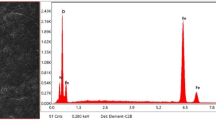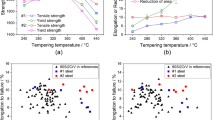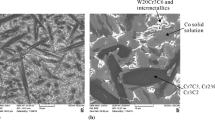Conclusions
-
1.
Alloying of carbide-forming elements with austenitic manganese steel increases the strength and hardness. The addition of 0.7% V is particularly effective.
-
2.
At a substantial degree of deformation (above 45%) there is no great difference in the hardness of the steels investigated (HV 500–520).
-
3.
Up to 6.5% Cr and up to 1.24% Mo substantially decreases the susceptibility of austenitic manganese steels to cold brittleness.
-
4.
In the process of plastic deformation the α-phase is formed as submicroscopic particles uniformly distributed on the slip planes in the deformed austenite.
-
5.
The austenite in the steels investigated is susceptible to phase transformations from 300 to 600°C. The stability of the austenite is minimum at 500–600°C.
Similar content being viewed by others
Literature cited
V. I. Grigorkin, FMM (1962),14, No. 2.
V. T. Biryulin and V. D. Sadovskii, Transactions of the Institute of Physics of Metals [in Russian], Moscow, Izd. AN SSSR (1956), No. 18.
Additional information
Chelyabinsk Polytechnical Institute, Moscow Institute of Steel and Alloys. Translated from Metallovedenie i Termicheskaya Obrabotka Metallov, No. 10, pp. 27–31, October, 1966.
Rights and permissions
About this article
Cite this article
Grigorkin, V.I., Korotushenko, G.V. Properties of austenitic manganese steels alloyed with carbide-forming elements. Met Sci Heat Treat 8, 809–812 (1967). https://doi.org/10.1007/BF00655785
Issue Date:
DOI: https://doi.org/10.1007/BF00655785




